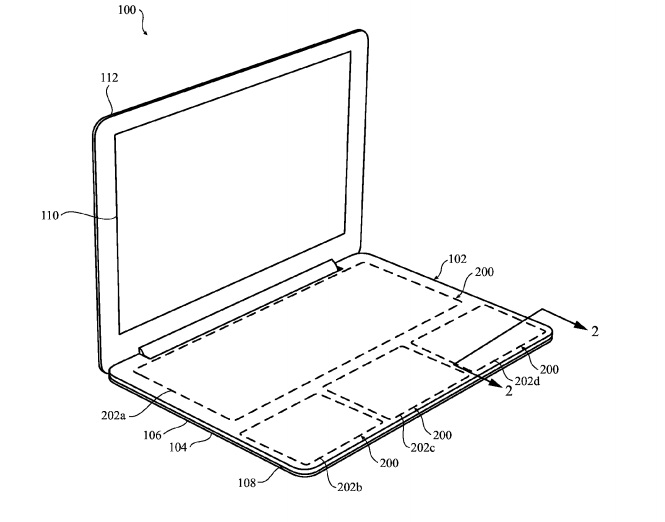In an attempt to make their ultra-thin Macbooks thinner and sleeker, the American tech conglomerate Apple has recently filed a patent for laptops with keyless touchpad keyboard, or in a simple word, a laptop without physical keyboard keys.
Termed as the “Zero Travel”; the petition depicts that a large full touchpad, much similar to the Force Touch trackpads which is currently being used on company’s MacBook and MacBook Pro, will replace the traditional keyboards. Moreover, there will be no place for the conventional key backlighting too.

Though there will be no key present in the touchpad, but according to the petition, the “zero-travel” input mechanism will come with the presence of tiny and micro perforations in the keyboard, which would indicate the outline of individual keys to the users.
Check Also : Apple WatchOS 3
Apple was trying for years to invent a “configurable, force-sensitive input structure for an electronic device,” to interact with an electronic device and seems like that the company has finally reached to a break through. The filed patent also releases a picture of a laptop which looks like a MacBook with the proposed technology.
Now the question is why the mechanism is being dubbed as the “zero-travel” input technique? Apple took the instance of the touch-screen to explain it. When a user press on the touch-screen, there’s no physical mechanism that moves and hence this input method called as the “zero-travel” input mechanism.
Also Check : iOS 10 alternative keyboards
As we have said earlier, this recent invention of the touchpad input method has similarities with the “Force Touch” trackpads that this American tech giant has included on recent their MacBooks, so find out how the whole process works. The whole mechanism rely on the haptic or kinesthetic communication technology, which means instead of clicking, a layer senses the force which has been created by the user’s fingers impart to the surface and when pressed down, instead of the trackpad actually moving, a small motor generates a sensation as if the user is actually clicking.
There is not even a slightest doubt that this idea of kinesthetic communication technology, which can be configured for a laptop keyboard, a number pad, or a track pad, all with the same general input structure, incorporated in this patent, has taken the keyboard concept to a whole new level. Moreover, the positioning of these haptic keypads can be configurable, that means you can use the keypad’s number pad for Excel sessions, as well as can configure it to a gamepad for playing games. Not only that, while using an image editing app, you can modify the quick shortcut keys in different colors; whereas, while browsing you can make use of a large part of this keyboard for scrolling, zooming and such activities.
Whether this “typing on the glass” technology will be housed in Apple’s upcoming products; time will only answer that. But the amount of time and money Apple has invested in zero-travel trackpads, there’s more than just possibility that the company will consider using that technology for keyboards and other input devices, in near future.